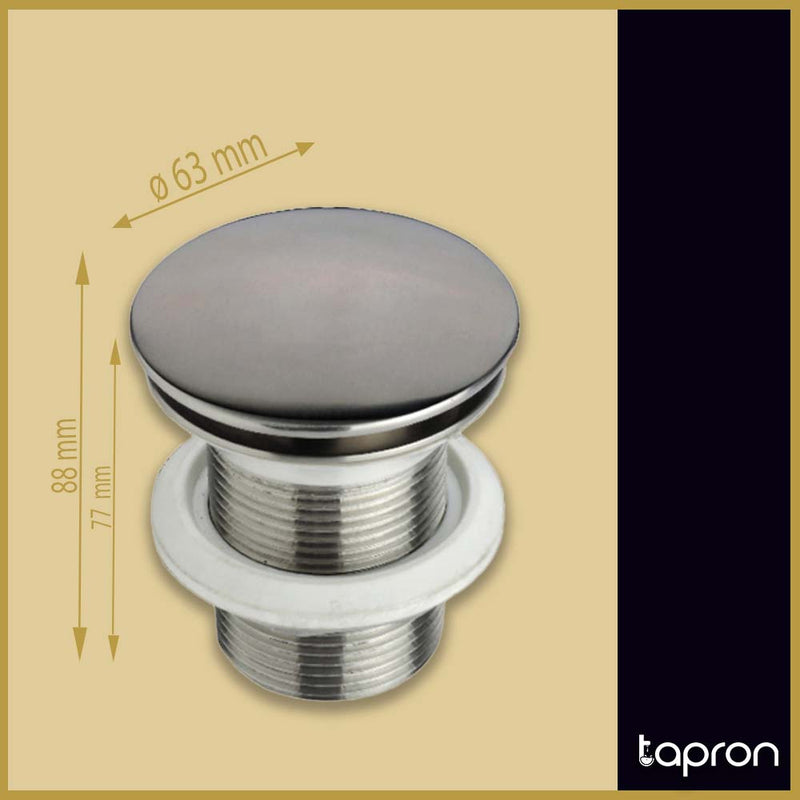How to Fit a Bathroom Sink Waste Plug: A Comprehensive Guide
15 Mar 2024
0 Comments
We Ship Worldwide
Currency
 AED
AED
 AFN
AFN
 ALL
ALL
 AMD
AMD
 ANG
ANG
 AUD
AUD
 AWG
AWG
 AZN
AZN
 BAM
BAM
 BBD
BBD
 BDT
BDT
 BGN
BGN
 BIF
BIF
 BND
BND
 BOB
BOB
 BSD
BSD
 BWP
BWP
 BZD
BZD
 CAD
CAD
 CDF
CDF
 CHF
CHF
 CNY
CNY
 CRC
CRC
 CVE
CVE
 CZK
CZK
 DJF
DJF
 DKK
DKK
 DOP
DOP
 DZD
DZD
 EGP
EGP
 ETB
ETB
 EUR
EUR
 FJD
FJD
 FKP
FKP
 GBP
GBP
 GMD
GMD
 GNF
GNF
 GTQ
GTQ
 GYD
GYD
 HKD
HKD
 HNL
HNL
 HUF
HUF
 IDR
IDR
 ILS
ILS
 ISK
ISK
 JMD
JMD
 JPY
JPY
 KES
KES
 KGS
KGS
 KHR
KHR
 KMF
KMF
 KRW
KRW
 KYD
KYD
 KZT
KZT
 LAK
LAK
 LBP
LBP
 LKR
LKR
 MAD
MAD
 MDL
MDL
 MKD
MKD
 MMK
MMK
 MNT
MNT
 MOP
MOP
 MUR
MUR
 MVR
MVR
 MWK
MWK
 MYR
MYR
 NGN
NGN
 NIO
NIO
 NOK
NOK
 NPR
NPR
 NZD
NZD
 PEN
PEN
 PGK
PGK
 PHP
PHP
 PKR
PKR
 PLN
PLN
 PYG
PYG
 QAR
QAR
 RON
RON
 RSD
RSD
 RUB
RUB
 RWF
RWF
 SAR
SAR
 SBD
SBD
 SEK
SEK
 SGD
SGD
 SHP
SHP
 SLL
SLL
 STD
STD
 THB
THB
 TJS
TJS
 TOP
TOP
 TTD
TTD
 TWD
TWD
 TZS
TZS
 UAH
UAH
 UGX
UGX
 USD
USD
 UYU
UYU
 UZS
UZS
 VND
VND
 VUV
VUV
 WST
WST
 XAF
XAF
 XCD
XCD
 XOF
XOF
 XPF
XPF
 YER
YER
 ZAR
ZAR
07 April 2024
04 April 2024
Fitting a bathroom sink waste plug is a straightforward yet essential task that ensures the functionality and hygiene of your bathroom sink.
Whether you're updating an old plug or installing a new one, the correct fitting of a waste plug prevents leaks and maintains the cleanliness of your bathroom.
This guide provides step-by-step instructions and valuable insights to help you fit a bathroom sink waste plug efficiently.
A bathroom sink waste plug is crucial for controlling water flow and maintaining the sink's cleanliness. It acts as a barrier, preventing debris from clogging the pipes while allowing water to drain smoothly.

There are various waste plug designs, including pop-up, click-clack, and traditional rubber stoppers. Each type offers unique functionalities suited to different preferences and sink designs.
Ensure you have the right tools and materials before starting:
Having these items on hand streamlines the installation process.
Choosing the correct waste plug is crucial for both functionality and design harmony in your bathroom. Waste plugs come in various materials such as chrome, brass, or matte finishes, each offering a different aesthetic appeal.
Ensure the plug's size matches your sink's drain hole — standard sizes typically range from 1 1/4 inches for bathroom sinks. For a cohesive look, match the plug's finish with other fixtures in your bathroom, such as taps and showerheads.
When replacing an existing waste plug, start by removing the old unit. This usually involves working beneath the sink. Use an adjustable wrench to loosen the retaining nut that secures the plug to the drain.
Be prepared for water residue and debris; placing a bucket underneath can help catch any drips. Inspecting the old plug and assembly can also provide insights into any wear and tear or buildup issues, guiding future maintenance.
A clean and debris-free drain opening is essential for a secure and leak-free installation. Use a mild cleaning solution and a soft brush or cloth to thoroughly clean around the drain opening, removing any grime, soap scum, or old sealing materials like plumber's tape.
Ensuring a clean surface not only aids in a better seal but also prevents future clogs and ensures the new plug operates smoothly.
If your new waste plug features a pop-up mechanism, ensure all components are correctly assembled according to the manufacturer's instructions.
Testing the installation for leaks is crucial; fill the sink with water, then release it while checking both above and below the sink for any sign of leakage. Minor adjustments can be made to tighten the setup, but persistent leaks may require reevaluating the seal or consulting a professional.
To maintain your sink waste plug:
Fitting a bathroom sink waste plug is a key maintenance task that enhances your bathroom's functionality and aesthetics. By carefully selecting the right plug, ensuring a clean installation surface, and performing regular maintenance, you can achieve a leak-free and efficient bathroom sink. This guide is designed to empower you with the knowledge and confidence to fit a bathroom sink waste plug, contributing to a well-maintained and hygienic bathroom environment.
Thanks for subscribing!
This email has been registered!

Leave a comment
All blog comments are checked prior to publishing